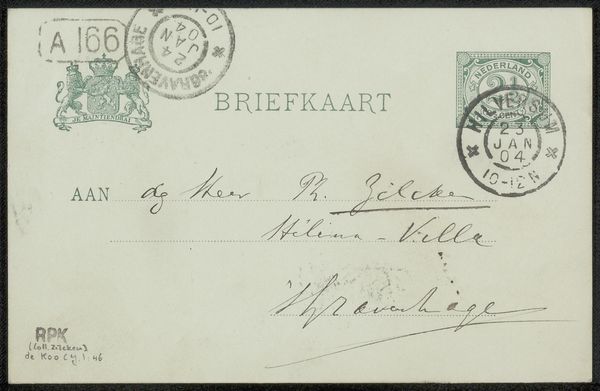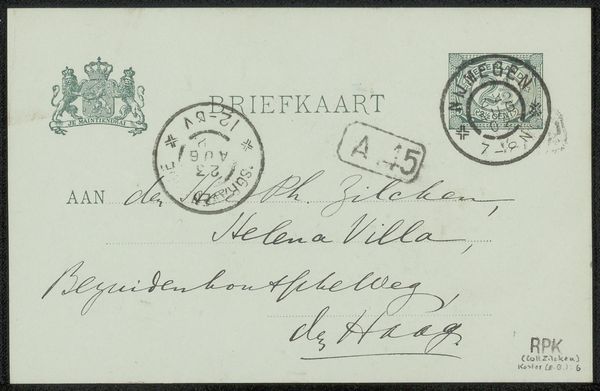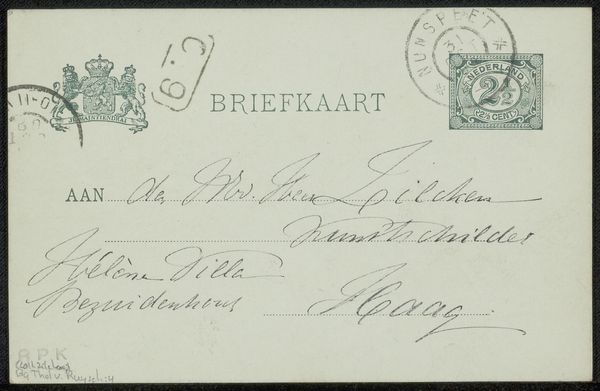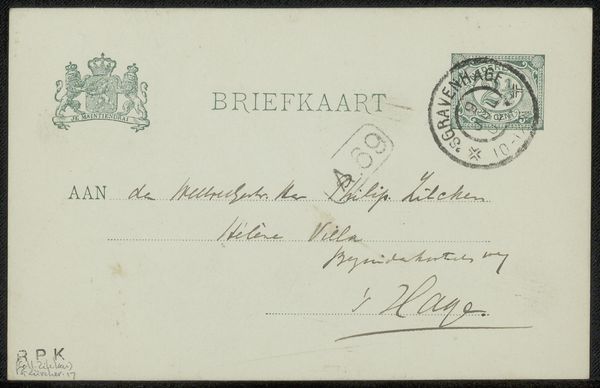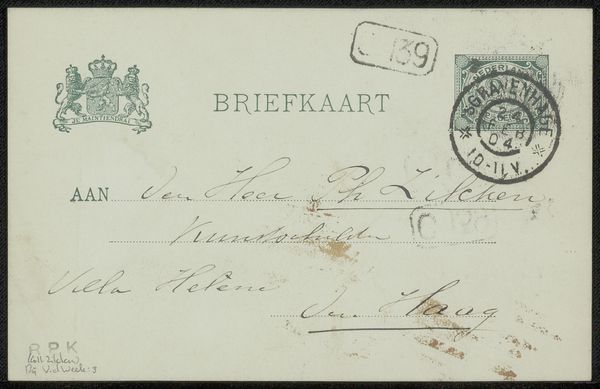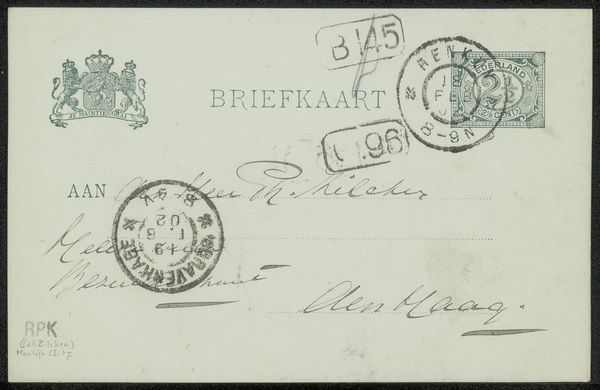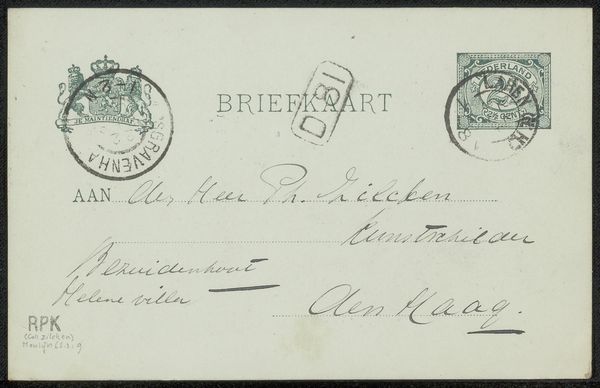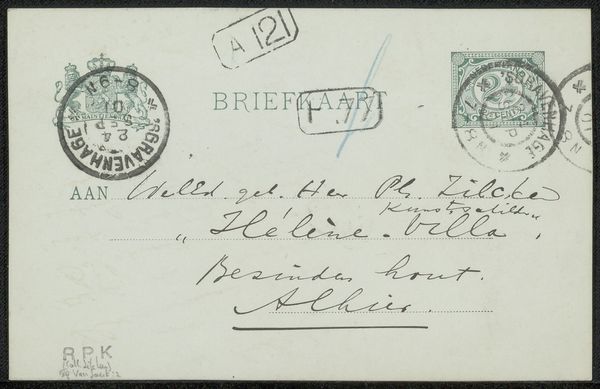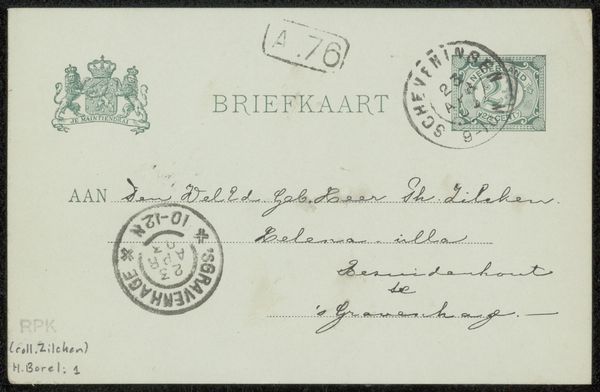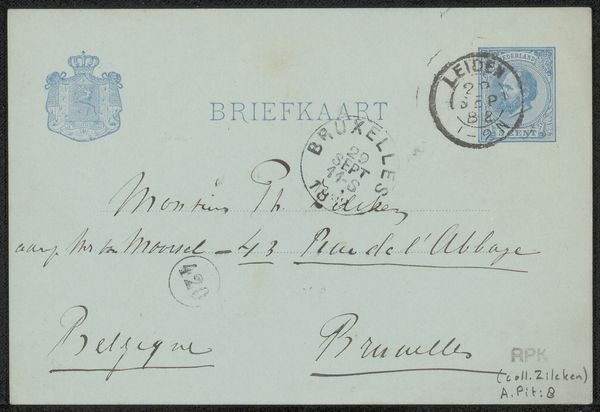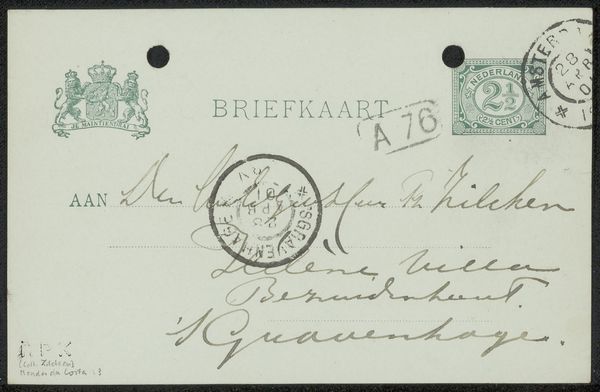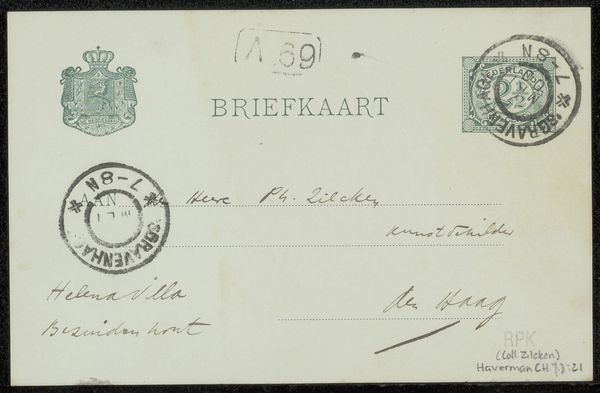
drawing, paper, ink, pen
#
drawing
#
hand-lettering
#
pen sketch
#
hand drawn type
#
paper
#
personal sketchbook
#
ink
#
ink drawing experimentation
#
pen-ink sketch
#
pen work
#
sketchbook drawing
#
pen
#
storyboard and sketchbook work
#
sketchbook art
Copyright: Rijks Museum: Open Domain
Editor: This is "Briefkaart aan Philip Zilcken," thought to be from around 1904. It's an ink drawing on paper. Looking at it, it reminds me of historical documents with all the stamps, handwritten address and royal seal; a little piece of someone's life preserved on paper. What significance do you find in this kind of ephemera? Curator: Precisely, it’s an interesting question about cultural memory. Postal markings, official seals… each one becomes a small monument to bureaucracy and communication norms of the era. That seal, for example, connects this simple postcard to the larger narrative of the Dutch state. The address itself also anchors it to a specific time and place. Doesn't the handwriting also evoke a sense of intimacy, lost now, in our age of digital communication? Editor: It does. And the marks left by the postal service! Smudges, numbers. Were postcards like this common at the time? Curator: Postcards were a booming medium. This card would have represented not just a message, but a tangible link, carrying with it the spirit of its sender across geographical space, carrying also a status through calligraphic conventions to "the honorable Gentleman, Mr. Ph. Zilcken." What symbols do *you* think will represent *our* current era in a hundred years? Editor: I hadn't thought of that. Maybe screenshots? So much communication is digital. I find the connection you make to shared cultural practice very thought provoking. Curator: And I find *your* initial read on how “life” is preserved here particularly resonant. Perhaps these humble artifacts tell us more about ourselves than we realize.
Comments
No comments
Be the first to comment and join the conversation on the ultimate creative platform.
